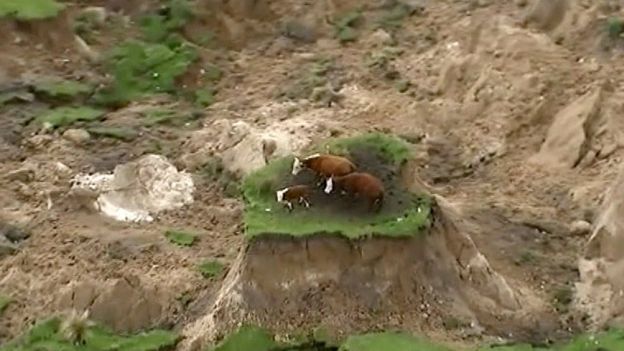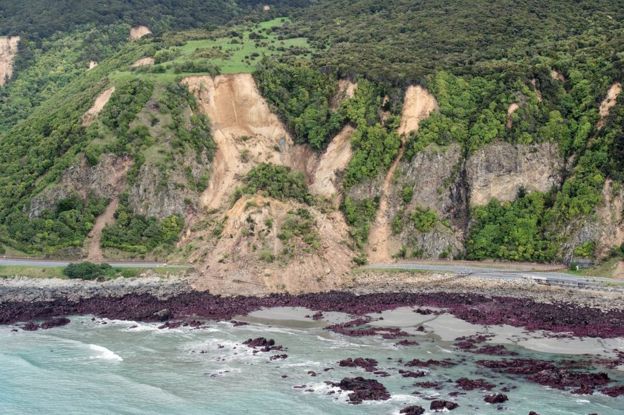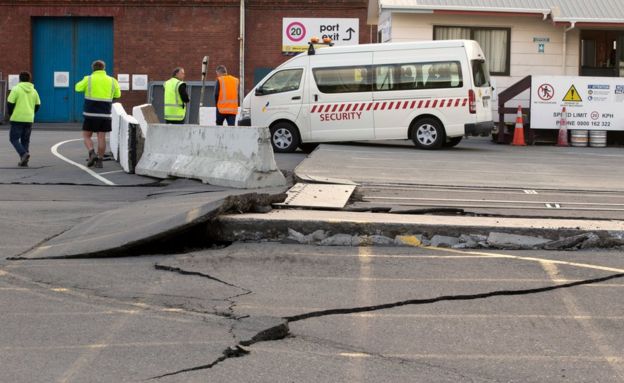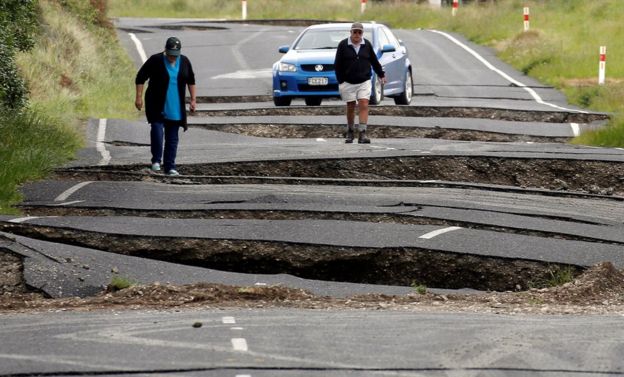Strong aftershocks have roiled New Zealand following a 7.5-magnitude earthquake that killed two people.
The South Island has seen hundreds of tremors, including a 6.3-magnitude quake, after the initial one struck after midnight on Monday.The epicentre is northeast of Christchurch, near the town of Kaikoura which has been cut off by landslides.
A large river dammed up by a landslide also breached its banks, sending a "large wall of water" downstream.
Residents around the Clarence River - one of the largest on South Island - were being urged to move immediately to higher ground.
New Zealand media reported that a 100-year-old woman and her daughter-in-law were pulled out alive from their home in the town of Kaikoura, after the house collapsed in the first earthquake. The younger woman's husband died.
A woman also died at Mount Lyford, southwest of Kaikoura, though there are reports she may have died from an existing medical condition.
Waves of around 2m (6.6ft) hit the coast shortly after the first earthquake. Authorities have since lifted a tsunami alert, but are still warning people to stay away from the shoreline.

The fate of the three stranded cows is not yet known
The military and fire service have dispatched teams in helicopters and a navy ship to the town, and some people are being airlifted out.
Newshub shared a video of three cows left stranded on a tiny island after the surrounding earth collapsed from landslides near Kaikoura.

New Zealand resident Henry McMullan tweeted this picture of an overturned car on State Highway One, with the words 'Driver out and safe' written on it
Exhaustion from a sleepless night, concern for those still cut off from communication, and sadness for the two people who lost their lives. But there is also real relief.
This earthquake was greater in magnitude than 2011's Christchurch tremor, but it didn't bring the same level of devastation.
The cost of rebuilding will be huge - major parts of New Zealand's infrastructure have been twisted and snapped out of shape.
But as is often the case when disaster strikes, New Zealand's people have pulled together, checked on their neighbours and offered each other a safe haven

The New Zealand Defence Force released this photo showing a huge landslide on State Highway One near Kaikoura

The tremors were felt in Wellington as well, where cracks emerged on roads
One expert told TVNZ that the low number of fatalities may have been due to the fact that the first quake struck in the middle of the night.
"People were safe in their homes, homes might get damaged but they're safer for the people inside," said Ken Elwood from the University of Auckland.

No comments:
Post a Comment